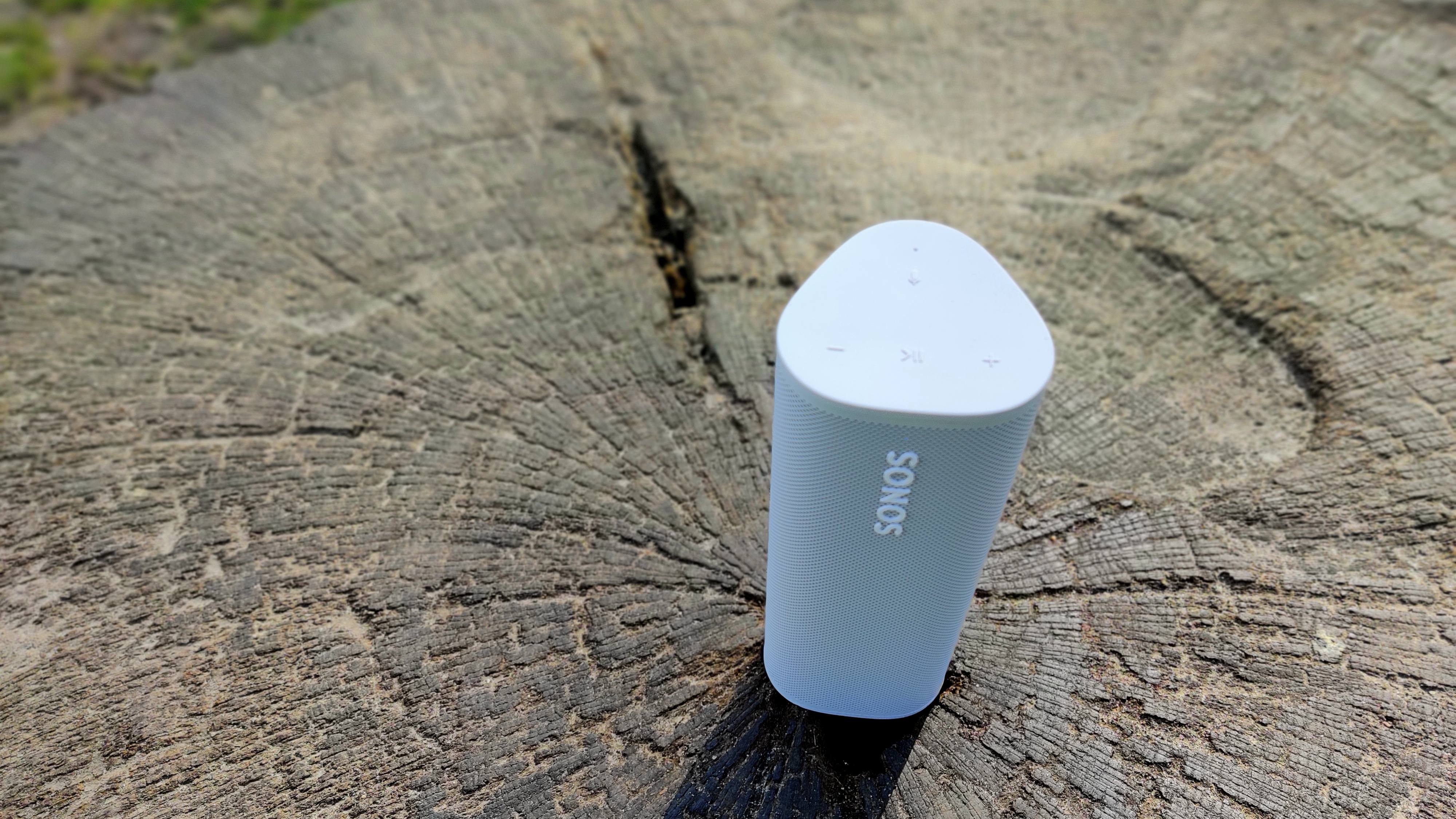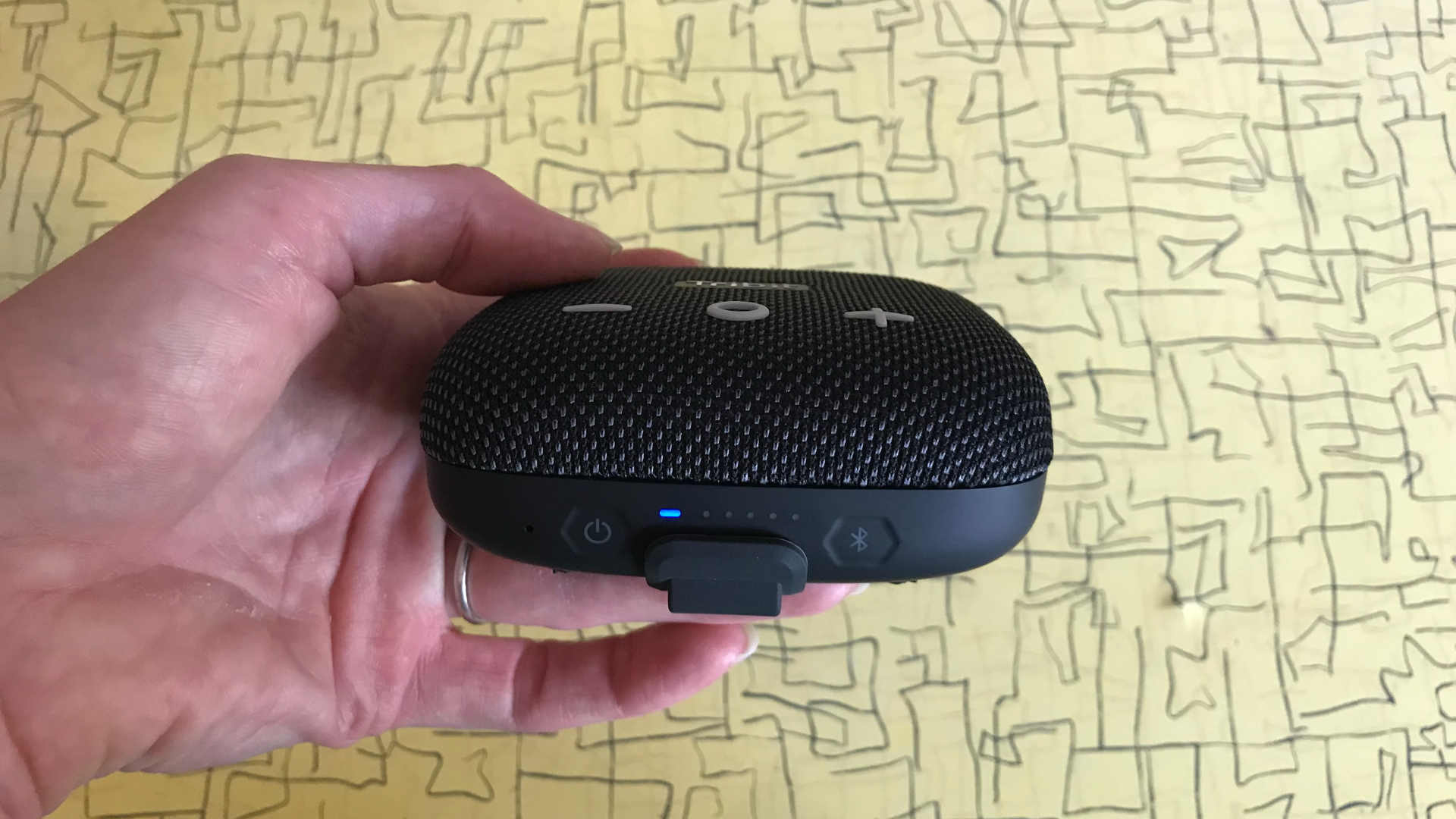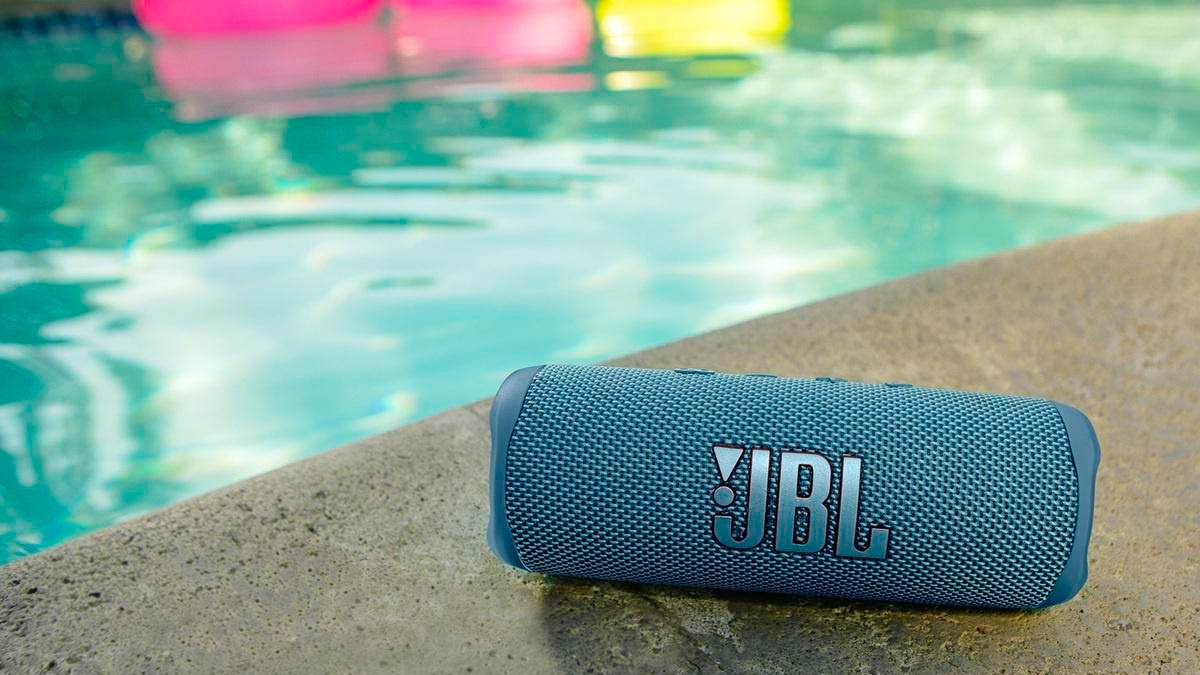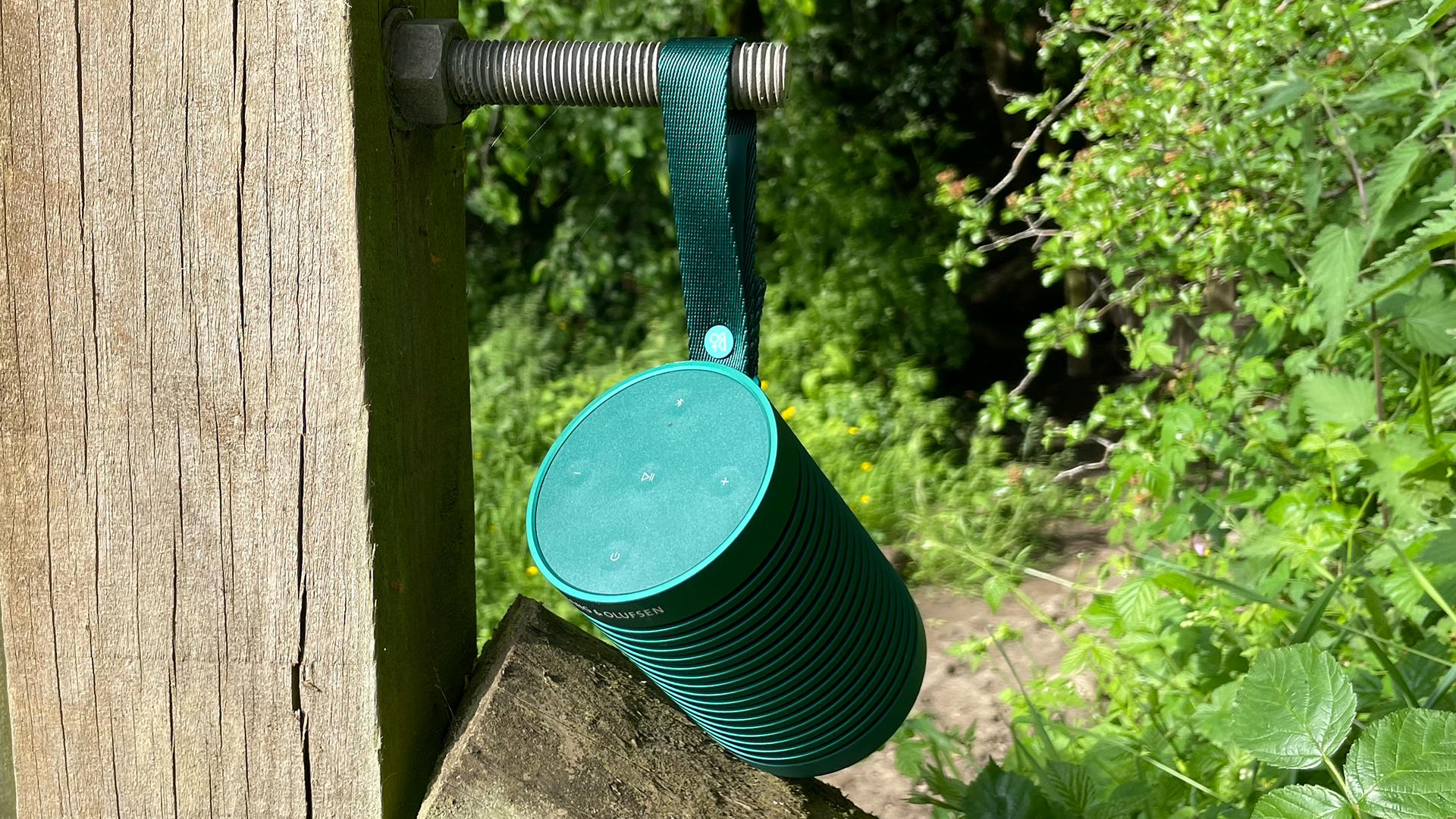5 essential tips to find the perfect portable Bluetooth speaker for you
Key features for excellent outdoor audio you can share and carry

The best waterproof speakers are little wonders, delivering superb sound and long battery life to soundtrack your every adventure – no matter how heavy a dose of mother nature you both encounter. Whether you’re going to the park, the beach, a party (we have a dedicated best party speakers guide for that too), a campsite or the middle of nowhere, you’re spoilt for choice at every budget, with models ranging from pocket-sized power houses to block-rocking sonic superstars.
That’s great, but it also means there are a plethora of speakers to choose from. So how do you decide which one’s best for you? Price is a key factor, of course, which is why when we look at the best Bluetooth speakers, we're always balancing sound quality and features with the cost. But those features we just mentioned – plus the overall usability – are important factors in your purchase too.
Here are five key things you should think about when you’re looking for a great speaker to take on your trips and travels.
1. Bass
If you’re all about that bass, you might think it's best to steer clear of the smallest outdoor speakers – and while the Tribit Stormbox Micro 2 is excellent through the low end for a small speaker, you do have a point: there's always going to be a limit to the low end in a speaker with bijou drivers. Something like the Sonos Roam, with its large oval woofer, will deliver much stronger bass than a tiny speaker such as the pocket-sized JBL Go 3 – although at five hours of battery life, we wouldn't recommend the Go if you're going anywhere for a whole day anyway.
And it doesn’t mean you need to go for something that looks like the bass bins from a rave. Many portable and outdoor speakers supplement their speaker drivers with passive radiators – see the wine-bottle sized JBL Charge 5 for starters – which channel the air pressure from the driver(s) towards a diaphragm that then vibrates, adding more power to the sound. The result: more bass without having to fit huge speaker drivers.
Basically, if you want full, boot-shaking bass but you want something that you can carry if it's a 20 minute walk away, check our dedicated reviews before you click 'buy'.

2. Battery life and charging
We’re assuming you’re looking for a portable rather than permanent outdoor speaker here, and that means battery life is important. Manufacturers’ battery life figures are usually “up to” claims that may not ring true if you like to play your music loud (these figures usually assume 50% volume at most), but as a general rule you can and should expect your Bluetooth speaker to run for 15-20 hours these days.
Get daily insight, inspiration and deals in your inbox
Sign up for breaking news, reviews, opinion, top tech deals, and more.
As with smartphones, there’s often a trade-off between battery size and portability here: bigger batteries may last longer, but they often take up more space and add weight, so make sure you check the spec sheet if you’re looking for a speaker to take on a hike.
Some speakers have fast-charging support for quick top-ups via compatible chargers, and some, like the JBL Charge 5 and Tribit Stormbox Micro 2 (both listed above), even enable you to charge your phone form their battery. Of course, by doing so you’re slightly reducing the speaker’s own stamina, but doubling up to juice up your phone is a neat perk, we think you'll agree.
Think about what cables and potentially what charger you’ll need to pack, too. Some older speakers charge via micro-USB (and even some newer ones, such as the disappointing Ultimate Ears Wonderboom 3), but USB-C is now the standard, meaning the speakers can take advantage of much faster charging speeds on suitably powerful chargers – and charge from the cable you're likely packing already.
3. Connectivity
There are two kinds of connectivity to think about here: how the speaker connects to your sound source, and how (or if) the speaker connects to other speakers physically or via software. Many outdoor speakers can be paired with identical models to deliver stereo audio or to have multiple speakers in sync daisy-chaining with up to 100 similarly-enabled models. The words to look out for here are 'PartyBoost enabled' in JBL's ouevre, or 'Party Connect' if looking at Sony models – and here the Sony SRS-XG300 is a great shout.
Some Bluetooth speakers can integrate with multi-room audio systems so you can get the same music outside as inside – here, Sonos' splendid multi-room and surround systems need to be on your radar, and if you want portability to boot, either the Sonos Roam or Sonos Move.
The most common kind of connectivity is Bluetooth, which sips rather than guzzles electricity and enables you to stream from your phone, tablet or other device. Some more advanced speakers also have Wi-Fi for higher quality streaming, for features such as Apple AirPlay, and/or for connecting to the rest of your home audio system. The Sonos Roam (listed above) is a great example of that: it streams using Bluetooth when you’re outside away from your network, but it uses Wi-Fi to connect to your home network when you’re close enough.
The latest version of Bluetooth you’re likely to find in speakers is 5.2, but some older models run 4.2 and you really don’t want anything with an older version than that. Provided your phone or other audio source is compatible, the more recent the Bluetooth, the more energy efficient it is.
Bluetooth 5.0 brought with it a higher bandwidth (ie. better quality streams) and a longer range than Bluetooth 4.2. But now, there are further perks to consider – Bluetooth LE Audio (which stands for 'Low Energy') and Auracast audio sharing, which currently require Bluetooth 5.2 to work.
Some Bluetooth speakers support the aptX HD codec for higher quality music streaming, and some Sony models have LDAC, Sony’s own high resolution codec – including the Sony XG300 listed below. LDAC offers even higher quality than aptX HD, but not all music sources support it, and if you're using the speaker outside or at a party, you're unlikely to notice the difference through the leading edges of notes anyway.
Lastly, physical connections. Maybe you want an aux-in for your headphones or to physically hook your Bluetooth speaker up to a bigger model to beef up the audio. Look for that little round 3.5mm port.

4. Ruggedness
The great outdoors and electronics are rarely firm friends: there’s water, there’s dust, and there are accidents. Most outdoor speakers offer some kind of water and dust resistance, and there are lots of great waterproof speakers these days, but it’s important to know the different standards.
Speakers have 'IP' ratings to describe their environmental protection. The first digit after IP tells you the dust resistance; the second, water resistance. Some speakers list one but not the other, with an X replacing the missing number – so for example a speaker rated IP5X has a dust protection rating but not a water one, and a speaker rated IPX7 has a waterproof rating but no certification for dust or sand ingress.
For dust, IP5X is dust resistant, and IP6X is effectively dust-proof.
For water, IPX4 can handle splashes of water; IPX5 can survive low pressure water spray; IPX6 can handle higher pressure sprays; IPX7 can be submerged in up to a metre of water for 30 minutes (look to the Cleer Audio Scene here); and IPX8 can last for 30 minutes in water deeper than 1m. So for rain or spilled-wine resistance you’re looking at at least IPX5; for a speaker that can survive being dropped in a pond or stream, you’ll want a speaker rated IPX7 or IPX8. A speaker with maximum dust and water resistance will have an IP68 rating.
That’s the environmental hazards taken care of. Now for the human ones. Portable speakers’ biggest enemy is us: they can be dropped, they can be accidentally kicked, they can be knocked off tables and they can be banged around inside a bag or onto hard surfaces. Water and dust protection will prevent spilled drinks and other accidents from getting inside them, but if you think your speaker is going to live a hard knock life, it’s wise to get one that’s been designed specifically for more active use than one made to sit on garden furniture.
There's no handy rating system here, but it's clear quickly that the rounded shape and slightly soft outside of the JBL Flip 6 is going to take less damage from a fall than the heavier, less yielding Sonos Move.

5. Portability
Portability isn’t a huge consideration if you’re only planning to listen on the patio (we might even suggest this chunky Sony option on wheels here), but if you’re looking for a speaker to pack in hand luggage or to cram in alongside a tent and sleeping bag (and we do have a mini roundup of the three best Bluetooth speakers for your bag this festival season too) size and weight suddenly become very important.
The diddy Nokia Portable Wireless Speaker 2 weighs just 225g, the Tribit Stormbox Micro 2 weighs 315g; the JBL Charge 5 is triple that at nearly 1kg; the Sonos Move is 3kg. (We’d describe that last one as 'transportable' rather than 'portable').
Some outdoor speakers have built-in straps to make moving them less of a pain, for example the Bang & Olufsen Beosound A1 2nd Gen and Bang & Olufsen Beosound Explore – which it's worth mentioning are mighty fine-looking speakers to boot.
We hope we've helped you choose your next musical companion. As always, enjoy the music.
Writer, broadcaster, musician and kitchen gadget obsessive Carrie Marshall has been writing about tech since 1998, contributing sage advice and odd opinions to all kinds of magazines and websites as well as writing more than a dozen books. Her memoir, Carrie Kills A Man, is on sale now and her next book, about pop music, is out in 2025. She is the singer in Glaswegian rock band Unquiet Mind.
- Becky ScarrottAudio Editor
